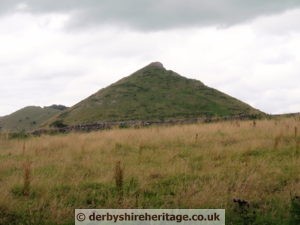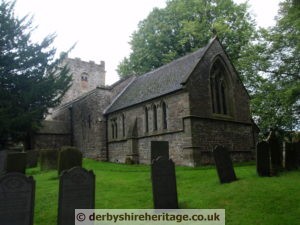Thorpe was originally a Danish settlement from the 9th Century “thorpe” being a farm or hamlet in Danish. Thorpe is mentioned in the Doomsday Book as torp and a record from 1323 lists the place as Thorpe on the Clottes, a reference to nearby Thorpe Cloud with the cloud derived from ‘clud’ meaning large rock or hill. Thorpe Clo
At the time of Domesday, Thorpe was already owned by the crown but in 1245 it was handed over to Ralph de Hormanwell. Subsequently it passed into the possession of various notable local families, including the Cockaignes and the Millward’s of Broadlaw Ash. In the middle of the 19th century Sir William Fitzherbert of Tissington bought the estate. He marked the occasion by planting a tree, a Wellingtonia.ud is the 1,000ft hill at the entrance to Dovedale. At the time of Domesday, Thorpe was already owned by the crown but in 1245 it was handed over to Ralph de Hormanwell. Subsequently it passed into the possession of various notable local families, including the Cockaignes and the Millward’s of Broadlaw Ash. In the middle of the 19th century Sir William Fitzherbert of Tissington bought the estate. He marked the occasion by planting a tree, a Wellingtonia.
At the time of Domesday, Thorpe was already owned by the crown but in 1245 it was handed over to Ralph de Hormanwell. Subsequently it passed into the possession of various notable local families, including the Cockaignes and the Millward’s of Broadlaw Ash. In the middle of the 19th century Sir William Fitzherbert of Tissington bought the estate. He marked the occasion by planting a tree, a Wellingtonia.
Thorpe’s church of St. Leonard was founded in Norman times but may well be older. It was originally a chapelry of Ashbourne and the Taxation Roll of Pope
Nicholas IV, in 1291, makes no mention of a separate parish of Thorpe. The first record of such independence comes with the institution of Ralph de Cressi as rector, in 1299. The church has a squat Norman tower, which possibly dates from the transitional Saxon-Norman period, the division of the belfry windows into two lights, recessed from the main arch, is a typical Saxon touch. The unaisled nave, with its projecting south porch, dates from the early 14th century suggesting that the original nave might have been of timbered construction, dating from Saxon times.
Inside the church, the font is said to be one of only three Derbyshire tub fonts, which are undoubtedly from the 11th century. The chancel was rebuilt in 1881, when the vestry was also added. In the sanctuary is the tomb of John Millward (1632), with the tiny figures of two daughters. The 17th century tomb of John Milward was partly destroyed during restoration but in front of it, are engravings of his 2 daughters dressed in gowns with embroidered bodices and his 2 sons in cloaks and wide topped riding boots. Both the sons were soldiers, one a colonel in the service of King Charles the First.
John Millward served Charles I as a colonel, and subsequently bought the manor at Snitterton in the parish of Darley Dale. He died in 1670, leaving only daughters and the eldest married Charles Adderley, thus taking the moiety of Snitterton and the Manor of Thorpe into the Adderley family. The church also has a Breeches Bible in which Adam and Eve wear breeches rather than the traditional fig leaves.


